| 1 | Brazilian smooth snake |
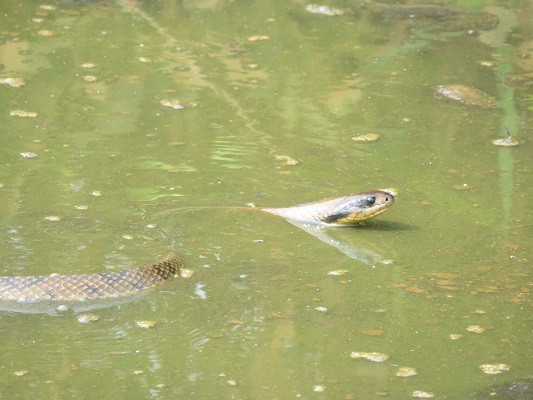
A cannibal snake of Amazon waterways, which hunts down fellow snakes amidst riverside reeds and knee deep marshes. Brazilian smooth snakes are notorious enough for eating each other that reptile keepers warn never to keep them in the same cage. The Brazilian smooth snake (no relation to the UK smooth snake) isn’t passionate about cannibalism and doesn’t conduct chanting rituals in caves like humans. They’re just ruthless and will do whatever it takes to survive.
This species has a dietary breakdown of 30-40% amphibians, followed by reptiles and other snakes at 20-30%, and have a mild venom suitable for subduing small prey. Other snakes in their diet include the golden liophis and leopard keelback.
The Brazilian smooth snake rolls forward like a tank and swallows its kin without thinking. Not only are there no agonised moral debates like most people have before they eat someone, but the Brazilian smooth snake barely stops moving. Cannibalism comes naturally to it. Brazilian smooth snakes are little threat to human beings, despite measuring 2-3 metres, but can bite painfully if repeatedly bothered.
| 2 | Puerto Rican boa |
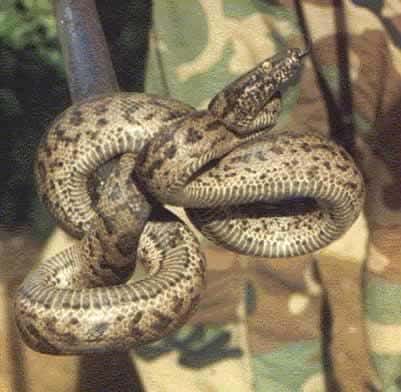
The Puerto Rican boa is benign in most ways, with no venom and docile personality. Their one dark secret is committing the grotesque act of cannibalism. In 2004, scientists witnessed one adult measuring 100-150cm swallowing up a juvenile measuring 50cm, in a karst valley floor. The boa swallowed its kin by the head and was one 1/4 swallowed when the scientists first appeared. They published their findings in Herpetological Review.
The Puerto Rican boa lives solely in its namesake islands, particularly in karst cave regions. They move at moderate speeds, but occasionally accelerate in sudden bursts. Other confirmed prey include fruit bats, black rats, and Evermann’s anoles.
One reason for their cannibalism is that snakes have no protective instincts. Social animals such as humans or a herd of sheep have a natural instinct to protect each other. This isn’t necessarily intelligence-based, but using animal instinct, recognising a creature that looks like them. Meanwhile, snakes couldn’t care less about their fellows (with a handful of exceptions). They’re solitary creatures and keeping a smaller, weaker snake alive doesn’t factor into their thinking. If possible, they’d rather eat them. This is true for the Puerto Rican boa. This species is also hunted by invasive Egyptian mongooses, so they don’t have it too easy. They could be inches away from committing cannibalism, only to be foiled at the last moment.
| 3 | Chilean long-tailed snake |
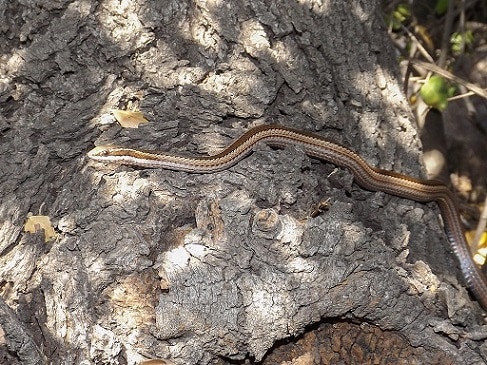
This Chilean snake has no qualms about eating its fellow kind whatsoever. In 2018, scientists witnessed its cannibalistic ways first hand. They were walking past a small stream when they saw a Chilean long-tailed snake swallowing a smaller one. 60 minutes later, the swallowing was almost complete, but the snake was spooked, and regurgitated its smaller meal. Miraculously, it was still alive, and the two continued to duel, before fleeing in opposite directions.
This species lives both in forests and grassland, and primarily eats lizards, adding mammals as they gain size. When committing cannibalism, their hunting style is identical to usual. The Chilean-long tailed snake moves steadily behind resting prey, gaining centimetre by centimetre. They’re immensely patient, and only pounce when they’re within virtually infallible range.
The Chilean-long tailed snake is obscure enough that few ever learn of its cannibalistic ways. If people did, it probably wouldn’t be ashamed anyway. Like others, it targets smaller members of its own species. Philodryas chamissonis both slithers along the ground and zips along tree branches manically, and is mainly active at night. This species is found solely in Chile, and often invades people’s houses.
| 4 | Cyprus black whip snake |
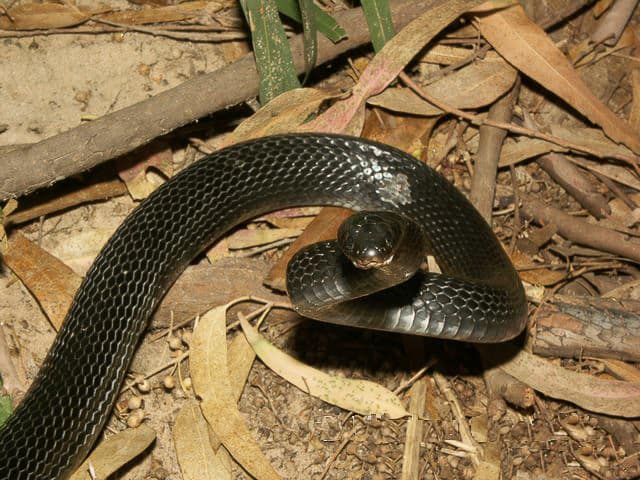
The 2 metre black whipsnake is one of the most common snakes in Cyprus. They’re everywhere in certain stony fields, and apparently they’ve decided that there’s no risk in eating each other, just a little bit. As well as black rats, goldfinches and snake-eyed lizards, black whipsnakes eat each other, for a helping of protein and nutrients like zinc. Being non-venomous, they don’t have to worry about swallowing a mouthful of toxins and dying (some snakes aren’t immune to their own venom).
Black whipsnakes have never killed a human, but are extremely aggressive, producing an intimidating hiss and gaping their mouths widely. This might be the last thing their cannibalistic victim ever sees, but maybe not, as this is a fairly fast snake which can easily dodge. Farmers used to trade the black whipsnake in olden times, for its beneficial effects on rodent populations.
It’s unlikely that fellow species members have any special nutritional advantage (even if they’re built with the exact same nutrients). Snakes are creatures of convenience, and even though they don’t all stoop to cannibalism, they’ll take an easy meal rather than one which takes effort. If they don’t take easy sources of calories when they can, they’ll be outcompeted by more ruthless snakes nearby.
| 5 | Smooth snake |

The smooth snake lives in British heathland, and gets most of its calories from native reptiles like common lizards and slow worms. Occasionally this needs supplementation, and so the smooth snake (Coronella austriaca) swallows up its fellow kind.
Smooth snakes use a combined hunting style, mixing pursuit and ambush. They position themselves in tangled heath strands, and follow their prey when it strolls past rather than instantly pouncing. The main determiner of prey is accessibility, not species – hence why they mindlessly swallow up their own.
The worst thing isn’t just swallowing its own species, but the uncaring, glassy-eyed stare they have. The smooth snake would probably commit cannibalism if they were the last 2 snakes of its species on Earth. Even if they were stranded in one tiny heathland patch which was about to be removed in a controlled wildfire, they would probably slither over and eat their kin without thinking. This species can live nearly 30 years, and thanks to its mid-ranking place in the food chain, it is regularly gobbled up by pheasants, foxes and badgers.
| 6 | Mulga snake |
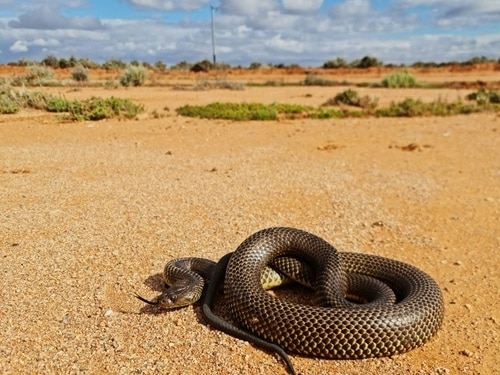
The mulga is already a brutal snake, injecting 400mg per bite and charging at victims in a wild rage. So cannibalism probably feels like nothing special, as they delve ever further into the dark arts. Mulgas are the longest venomous snake in Australia, and have a very wide diet. They eat geckos, skinks and mammals, and prey on crowned snakes as well as cannibalising each other.
A mulga snake could swallow a brown tree snake, and seconds later be swallowed by an even bigger mulga. This species has multiple observations of it eating its own kind. Mulgas even eat roadkill and the shed skins of fellow reptiles.
Mulgas don’t shy away from interspecies aggression in general, as males are constantly wrestling, intertwining their necks with all sinews straining. These battles can last for 2 hours, with nothing but dust on the horizon. Mulga snakes also invade human towns, particularly Alice Springs, where they lunge at unsuspecting people as they stow their bicycles away. If we’re lucky, they might eat every last one of each other.
| 7 | Montpellier snake |
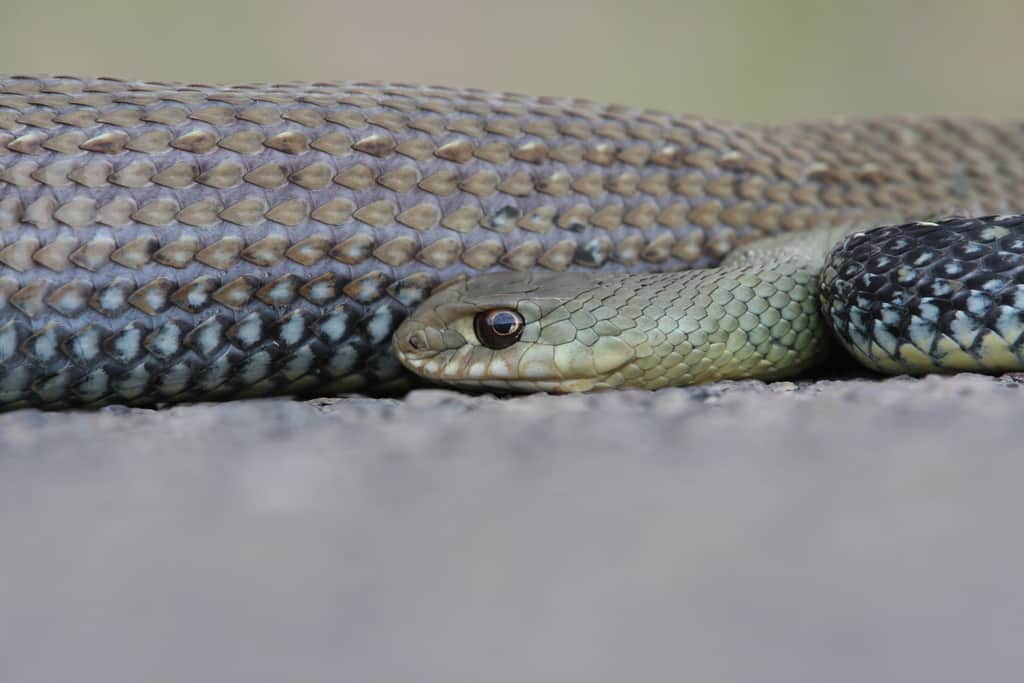
This snake devours all in its path, including wood mice, Algerian sand racers and European rabbits. Cannibalism is the next logical step, one which it gladly takes. Montpellier snakes live in Spain and Portugal, and are confident and adventurous, moving around in full view. They like to skirt over warm rock walls and are mainly active during the day.
The montpellier snake has a no holds barred, anything goes philosophy, and this extends to eating members of its own species. They’re willing to try anything once, or maybe dozens of times if they enjoy it.
It isn’t as though montpellier snakes are unable to recognise each other, as their scent apparatus is far more sophisticated than a human’s. Snakes need scent particles to identify each other when breeding. They simply consider belonging to the same species to be irrelevant, and gobble down their meal. Another disturbing possibility is that snakes are more attuned to their fellow species members, making them easier to hunt. The montpellier snake licks its lips, and slithers off for a meal which is virtually impossible to miss.
| 8 | Western Galapagos racer |
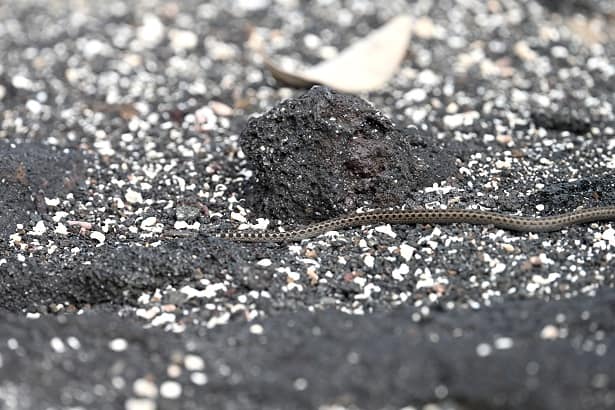
This species faces endless predators on their namesake island, including owls, centipedes and mockingbirds. Worst of all, even their own species wants to eat them. Not can they complain, as western Galapagos racers (Pseudalsophis occidentalis) regularly give into the temptations of cannibalism themselves.
This species occurs solely on Galapagos and primarily feeds on reptiles, such as Galápagos leaf-toed gecko and Isabela lava lizards. Most of their lives are spent on the ground, following subtle scent trails. Though not forming a large portion of their diet, Galapagos racers were proven in a 2021 study to eat each other, with a total of 93 racers captured from Cape Douglas, Fernandina Island. If a fellow snake catches its eye and is in a strategic location, then the Galapagos racer will slither up and swallow it whole, with no loyalty whatsoever.
This species lives in arid shrubland and deciduous woodlands, which makes fulfilling their cannibalistic fantasies all the more easy, giving them cover to advance and burst forward at the very last second. Galapagos racers live in isolated locations and scientists are only just uncovering their secrets.
| 9 | New Guinea small-eyed snake |
The New Guinea small-eyed snake (Micropechis ikaheca) either doesn’t realise that it’s eating fellow members of its species, or just doesn’t care. This cannibal snake lives in deep parts of the world, which appear in low detail on maps and are only under tenuous control by mankind. Such places are home to the more extreme elements of nature, and Micropechis ikaheca fulfils this by swallowing members of its own species whole. They’re found in New Guinea and nearby islands like Karkam island, in low-lying marshes and forests, sometimes beneath piles of coconut husks.
This species unhinges its jaws wide, starts with the head, and waits until the snake is completely swallowed before beginning the digestion process. This cannibalistic meal can sustain them for weeks until their snake hunger hormones start cranking back up again. Micropechis ikaheca is aggressive and a bite to the thumb can kill within 36 hours. They’re flexible rather than restricted to one dietary niche, eating frogs, lizards and mammals alike.
Even though prey is abundant in their forests, virtually all the species are energetic and vigilant, so the New Guinea small-eyed snake must take whatever meal it can. If that is a member of its own species, then so be it; Micropechis ikaheca will slither over and eat them automatically. Pictures are rare, so check out this video for footage.
| 10 | California kingsnake |
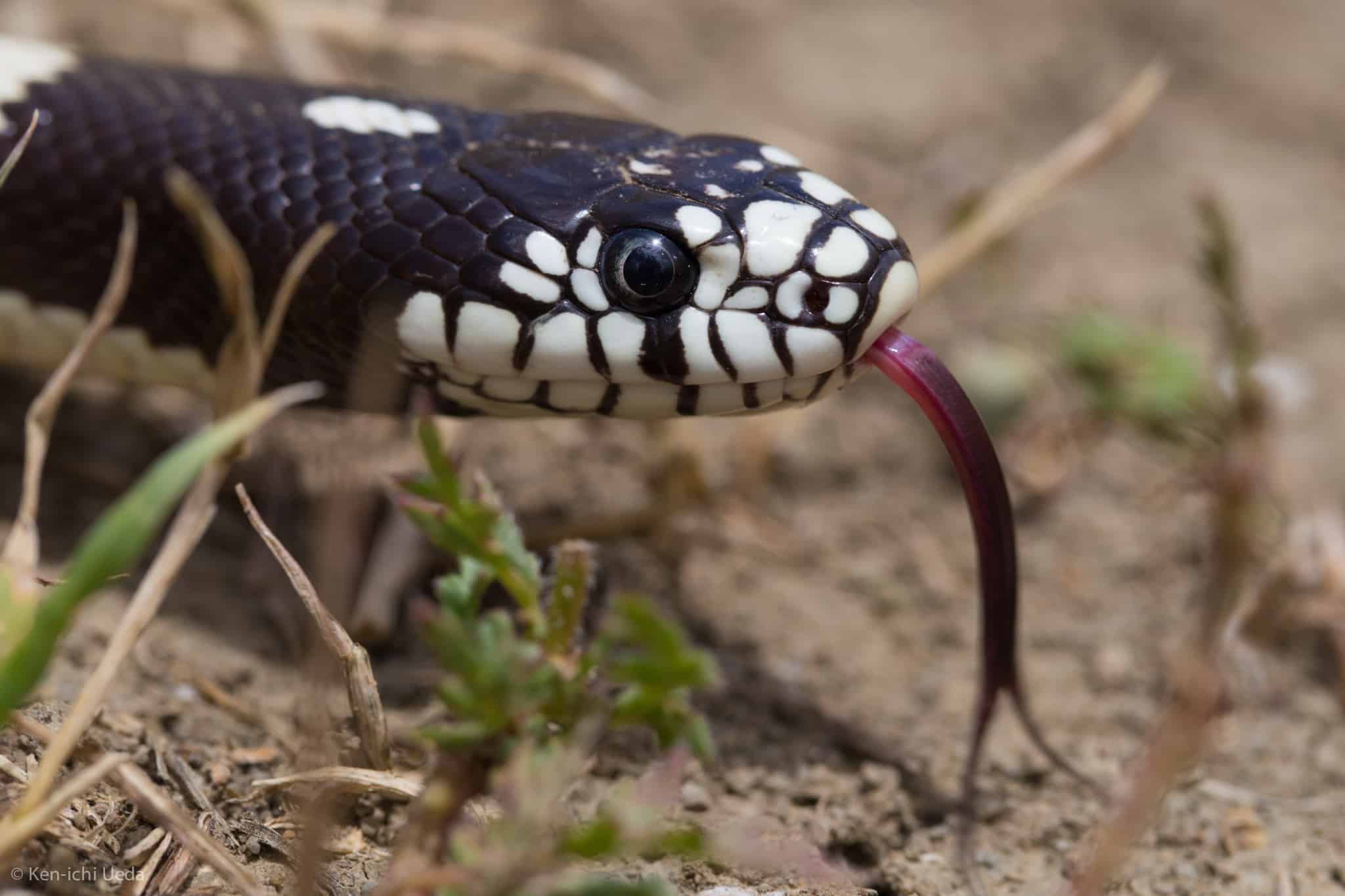
This species already has a taste for other snakes, as long as they can slot neatly into its belly. Their hunger is all-consuming and fellow species members don’t escape its roving eye. California kingsnakes (Lampropeltis californiae) live in open areas of the western US like grassland or dry plains. They have no venom and are little threat to humans, killing prey via grappling and pinning.
California kingsnakes move by day, which is superior for spotting their fellow snakes slithering around. California kingsnakes have been spotted eating gopher snakes, sidewinders and Pacific rattlesnakes, so they have no preference for eating each other, but they don’t have a problem with it either. California kingsnakes pin each other to the hard packed Earth, ensuring that its prey is securely gripped. California kingsnakes are experts at doing this without arms and legs, just with coils. Then they swallow by the head, which slots neatly into their own elongated body.
California kingsnakes generally aim for species members smaller than themselves, out of simple convenience. It’s easier to cannibalise snakes smaller and weaker than themselves – that’s one of nature’s brutal laws. Supposedly, kingsnakes will even try to eat themselves if hungry enough.
